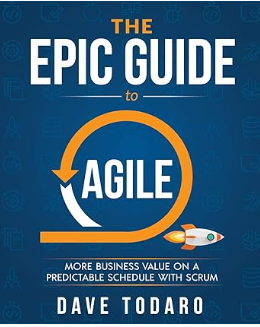What is the Agile Manifesto?
The Agile Manifesto was created in February 2001 by a group of 17 software developers who met at the Snowbird Ski Resort in Utah. These developers, who came from various backgrounds and had experiences with different software development methodologies, were seeking a better way to develop software in response to the challenges they faced with traditional, heavyweight development methodologies like Waterfall.
The problem they were trying to solve was the inefficiency and inflexibility of traditional software development processes. Waterfall, for example, emphasized extensive planning upfront, followed by sequential stages of development, testing, and deployment. However, this approach often led to lengthy development cycles, high costs, and difficulties in adapting to changing requirements.
The creators of the Agile Manifesto aimed to address these issues by advocating for a more lightweight, iterative, and collaborative approach to software development. They valued individuals and interactions over processes and tools, working software over comprehensive documentation, customer collaboration over contract negotiation, and responding to change over following a plan.
Their intent was to promote a more flexible and adaptive mindset that could better accommodate evolving project requirements, improve communication between developers and stakeholders, and ultimately deliver higher-quality software more efficiently. This marked the beginning of the Agile movement, which has since influenced not only software development but also various other industries and disciplines.
Four key values of the Agile Manifesto:
- Individuals and Interactions over Processes and Tools
- In Agile, the focus is on fostering collaboration and communication among team members. It emphasizes the significance of human interactions and teamwork over relying solely on tools or rigid processes.
- Working Software over Comprehensive Documentation
- Agile prioritizes delivering functional software or tangible results rather than excessive documentation. This doesn’t disregard documentation but emphasizes its value in supporting the software rather than replacing it.
- Customer Collaboration over Contract Negotiation
- Agile encourages active involvement and collaboration with customers or stakeholders throughout the project lifecycle. This ensures that the end product meets their needs effectively and allows for adaptability to changing requirements.
- Responding to Change over Following a Plan
- Agile recognizes the inevitability of change in project environments. Instead of rigidly adhering to a fixed plan, Agile encourages adaptability and responsiveness to changes, even late in the development process.
Key Agile Principles
- Satisfy the Customer: Deliver valuable software that satisfies the customer’s needs through early and continuous delivery.
- Welcome Changes: Embrace changing requirements, even late in development. Agile processes harness change for the customer’s competitive advantage.
- Frequent Deliveries: Deliver working software frequently, with a preference for shorter timescales, fostering a rapid and flexible response to change.
- Collaborative Approach: Business people and developers must work together daily throughout the project.
- Supportive Environment: Create an environment where motivated individuals are given the necessary support and trust to get the job done.
- Face-to-Face Communication: The most efficient and effective method of conveying information within a development team is face-to-face conversation.
- Progress Measurement: Working software is the primary measure of progress.
- Sustainable Pace: Maintain a constant pace indefinitely. Agile processes promote sustainable development
Adopting an Agile Mindset:
Adopting an agile mindset involves embracing certain principles and values that underpin the Agile Manifesto. Here are some steps to help you adapt an agile mindset:
- Understand Agile Principles: Familiarize yourself with the principles outlined in the Agile Manifesto. These include valuing individuals and interactions over processes and tools, delivering working software frequently, collaborating with customers, and responding to change.
- Embrace Iterative and Incremental Development: Shift your mindset from a linear, sequential approach to one that emphasizes iterative and incremental development. Break down your work into smaller, manageable chunks and focus on delivering value in short cycles.
- Foster Collaboration: Encourage open communication and collaboration within your team and with stakeholders. Emphasize teamwork, transparency, and constructive feedback to foster a culture of trust and collaboration.
- Embrace Change: Be open to change and view it as an opportunity for improvement rather than a disruption. Adapt quickly to changing requirements and feedback, and continuously reassess your priorities to deliver the most value.
- Focus on Continuous Improvement: Adopt a mindset of continuous improvement by regularly reflecting on your processes, identifying areas for improvement, and experimenting with new approaches. Encourage a culture of learning and innovation within your team.
- Empower Teams: Empower teams to make decisions and take ownership of their work. Provide them with the autonomy and support they need to self-organize and deliver results effectively.
- Prioritize Customer Value: Keep the customer at the center of your focus and prioritize delivering value to them. Understand their needs and preferences, and strive to deliver solutions that meet or exceed their expectations.
- Emphasize Quality: Prioritize quality over speed and focus on delivering high-quality software that meets the needs of your users. Implement practices such as test-driven development, continuous integration, and automated testing to ensure consistent quality throughout the development process.
Understanding these Agile principles is fundamental to adopting an Agile mindset. They form the guiding philosophy behind Agile methodologies, enabling teams to embrace flexibility, adaptability, and customer-centric approaches in their project management practices.

THE EPIC GUIDE to AGILE
In The Epic Guide to Agile, you’ll discover:
- Personal examples and anecdotes to tackle problems at their source
- Effective ways to introduce agile and Scrum into your organization
- The exact system to achieve productive sprint planning sessions and successful sprints
- The typical issues that can doom your team and how to conquer them
- The testing and source code control techniques your team needs to be successful
- Tricks to smoothly get your product into production and much, much more!
Read more from our blogs:

Scrum Master
The role of a Scrum Master is pivotal within Agile frameworks, particularly in Scrum methodology. They are facilitators, coaches, and servant leaders.

Sprint Planning
Sprint planning is a cornerstone in Agile methodologies, serving as the roadmap for focused efforts within a specified timeframe, known as a Sprint.

Development Teams
In software development, adopting agile methodologies like Scrum has become a norm for achieving flexibility, efficiency, and faster delivery.